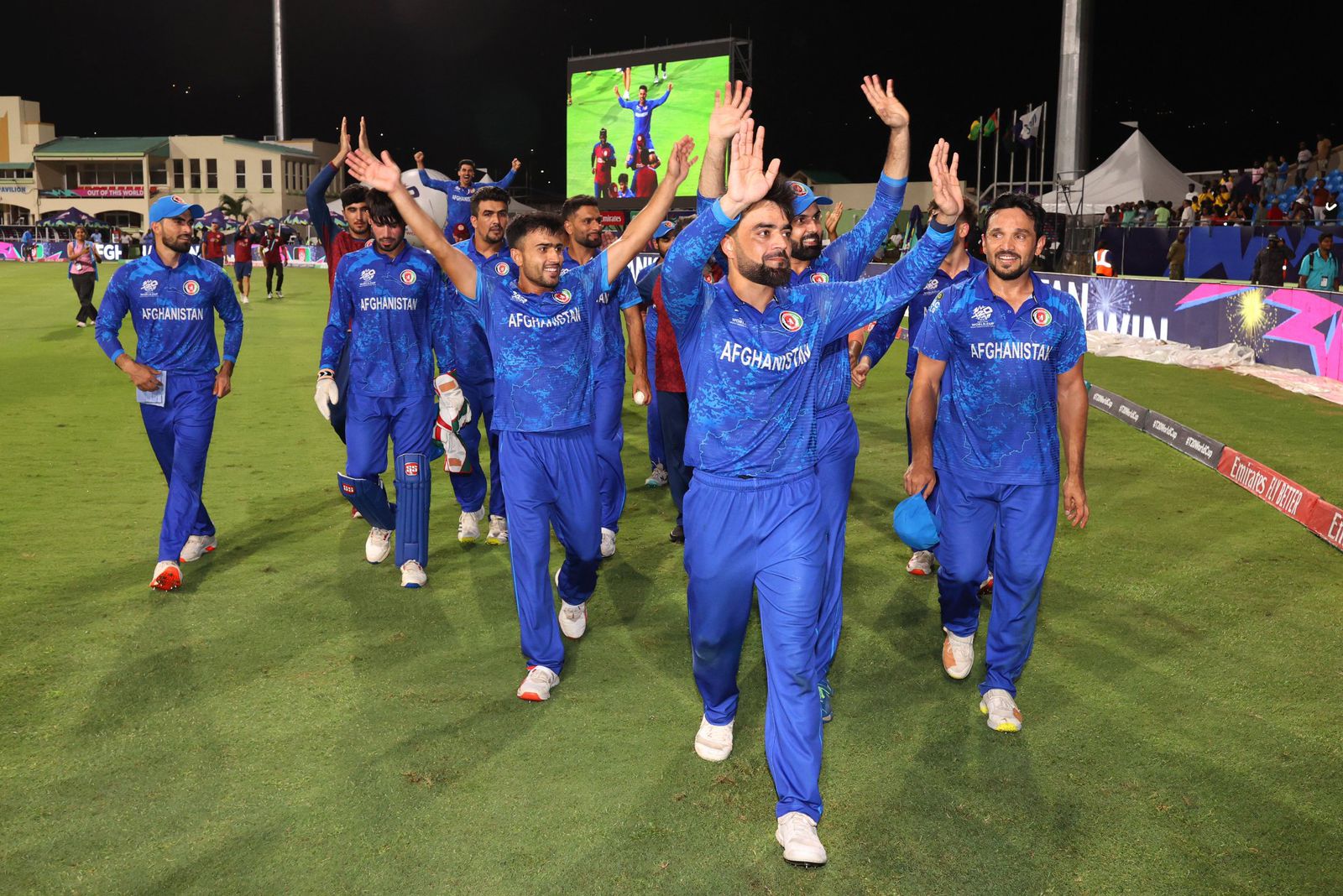If you followed Pakistani cricket in the early 2010s, you will likely recognize the current Afghan team with a nostalgic lens. Afghanistan’s lethal bowling attack backed with over-reliance on a few key batters, is like watching Misbah’s newly nomadic Pakistan all over again.
Their rise has been nothing short of remarkable. From competing in the fifth division of international cricket in 2008 to reaching the semi-finals of the largest T20 World Cup ever held (featuring 20 teams) in 2024, Afghan players deserve to hold their heads high. Perhaps only the swiftness of Gulbadin’s hamstring recovery can rival the speed of their ascent.
Afghanistan’s fairytale run had a rather anticlimactic end last night, with the Proteas running through them in a 9-wicket win. But fair play to Afghanistan who were playing their first ever ICC WorldCup knockout game — it took South Africa 8 semi-final attempts to finally make it to their first WorldCup final.
Regardless, Afghanistan has managed to punch above their weight this World Cup, defeating New Zealand and Australia among other teams. With most of their core still having a lot of cricket left in them, Afghan fans will already be buzzing for the next ICC tournament.
In the Semi Final, Afghanistan made a grave mistake of going with their strength (batting first) instead of the conditionally favourable decision of bowling first. In hindsight, this would have been a good toss to lose for them.
But despite last night’s result, their template for this World Cup campaign was remarkable. With 4 out of their 5 wins coming while defending totals, they maximally utilised their resources. With an average first innings total of 151 in winning causes, they excelled at out-bowling the other team. Not to take anything away from Afghanistan’s success, but the patterns are screaming right in my face and are hard to ignore. Do you not see the resemblance to the Asia Cup winning Pakistani side in 2012?
Following the Sri Lanka incident, Pakistan were forced to call UAE their home but they turned it into a fortress instead. It was there that Pakistan embraced the Misbah style of cricket (which haunted them later) and spun webs around touring teams with their lethal spin bowling attack. In the ODI format, Pakistan’s approach was equally effective.
They relied on their potent bowling attack to defend relatively modest totals, with the spinners once again playing a crucial role. Fast forward to 2012, and Pakistan made a statement at the international level by winning the Asia Cup. Interestingly enough, 2/3 of their victories came in defending totals, something the team was just as comfortable with as the current Afghanistan team.

Afghanistan’s rise in cricket reads like a fairytale on fast-forward. It all began in 2009 when they achieved ODI status. Just three years later, they graced the world stage for the first time at the 2012 World T20 in Sri Lanka. Their rise continued in 2015 with a historic debut in the 50-over World Cup, where they clinched a thrilling one-wicket victory over Scotland, their first-ever World Cup win. Finally, in 2017, they achieved the ultimate recognition — Test status — trying to solidify their place among the cricketing elite.
This ascent wouldn’t be possible without the crucial support from both PCB and BCCI. While the Afghan players’ grit and determination is undeniable, early exposure came through playing in Pakistan’s domestic circuit in 2001. India then stepped in, helping build stadiums in Kandahar, Kabul, and Khost, and even providing them with home grounds in Greater Noida and most recently, Lucknow. This helped fuel Afghanistan’s cricketing ambitions.
Moving on to November 2022, the Afghanistan Cricket Board signed a five-year agreement with the Emirates Cricket Board. This agreement allows Afghanistan to host their home matches in the UAE. Since the deal was finalised, they have enjoyed a successful run, winning 8 out of 12 T20Is played in the UAE, including a 2–1 series victory over Pakistan.
This success story is fascinating precisely because it defies conventional wisdom. Unlike established cricketing nations that rely on strong domestic structures, Afghanistan has pioneered a “top-down” approach out of necessity. Their international triumphs, sparked by the IPL and other T20 leagues, have become the catalyst for building domestic structures and grassroots programs. This unconventional strategy has allowed them to fast-track their cricketing success, at least in the short-run.
This “reverse-engineering” approach also sparks intriguing questions about the future of global cricket development. The recent World Cup highlighted a narrowing gap between associate and elite teams. Afghanistan’s model could serve as a blueprint for other developing nations, potentially leading to more heartwarming success stories in the coming years. Afterall, who wouldn’t prefer a sport beyond the dominance of a select few?

Follow ProPakistani on Google News & scroll through your favourite content faster!
Support independent journalism
If you want to join us in our mission to share independent, global journalism to the world, we’d love to have you on our side. If you can, please support us on a monthly basis. It takes less than a minute to set up, and you can rest assured that you’re making a big impact every single month in support of open, independent journalism. Thank you.















